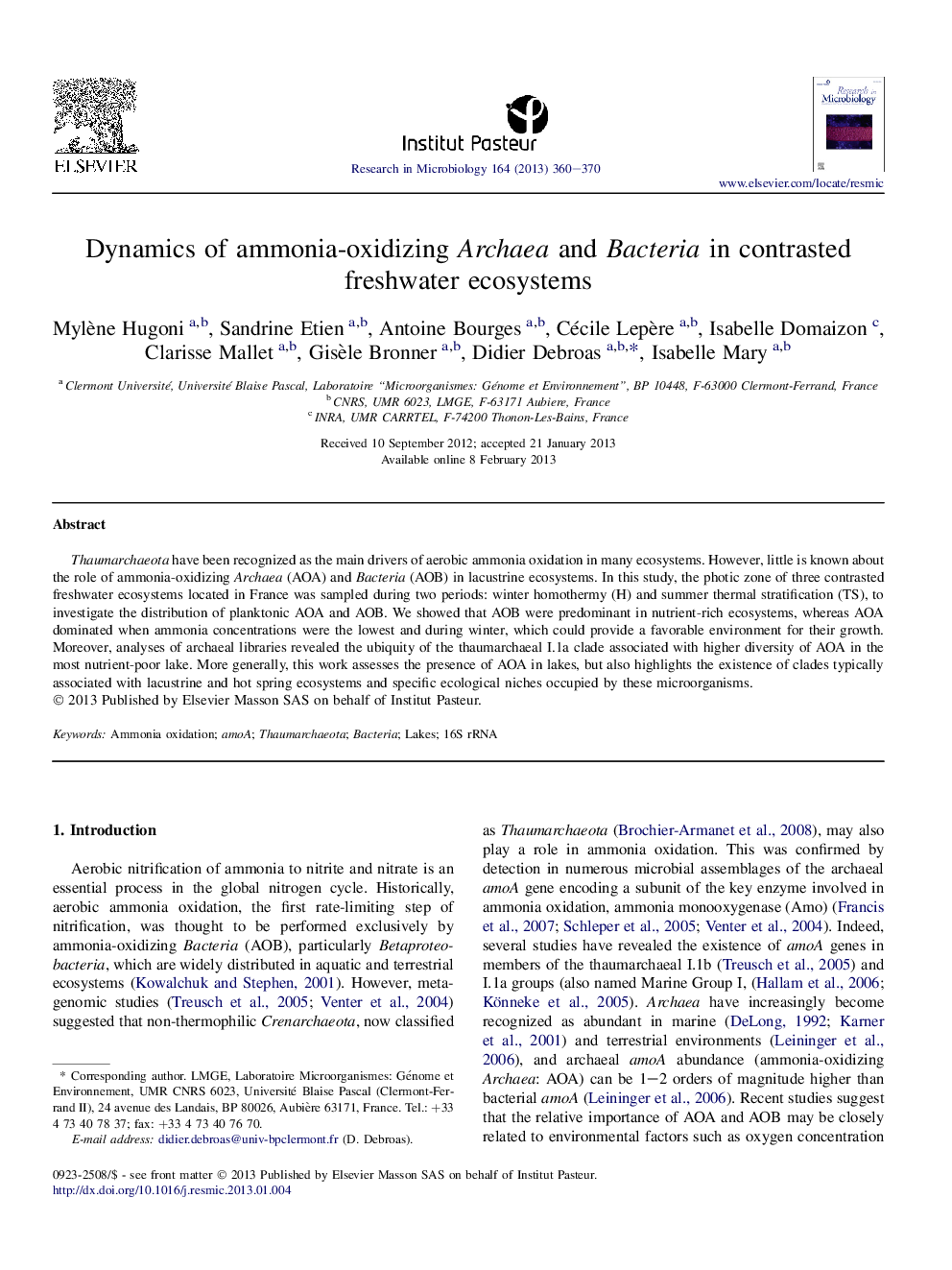| Article ID | Journal | Published Year | Pages | File Type |
|---|---|---|---|---|
| 4358917 | Research in Microbiology | 2013 | 11 Pages |
Abstract
Thaumarchaeota have been recognized as the main drivers of aerobic ammonia oxidation in many ecosystems. However, little is known about the role of ammonia-oxidizing Archaea (AOA) and Bacteria (AOB) in lacustrine ecosystems. In this study, the photic zone of three contrasted freshwater ecosystems located in France was sampled during two periods: winter homothermy (H) and summer thermal stratification (TS), to investigate the distribution of planktonic AOA and AOB. We showed that AOB were predominant in nutrient-rich ecosystems, whereas AOA dominated when ammonia concentrations were the lowest and during winter, which could provide a favorable environment for their growth. Moreover, analyses of archaeal libraries revealed the ubiquity of the thaumarchaeal I.1a clade associated with higher diversity of AOA in the most nutrient-poor lake. More generally, this work assesses the presence of AOA in lakes, but also highlights the existence of clades typically associated with lacustrine and hot spring ecosystems and specific ecological niches occupied by these microorganisms.
Related Topics
Life Sciences
Immunology and Microbiology
Applied Microbiology and Biotechnology
Authors
Mylène Hugoni, Sandrine Etien, Antoine Bourges, Cécile Lepère, Isabelle Domaizon, Clarisse Mallet, Gisèle Bronner, Didier Debroas, Isabelle Mary,
